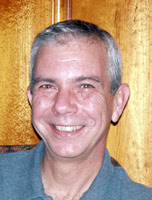Byron Wells

Byron Wells, Professor Emeritus of Romance Languages, received his Ph.D. from Columbia University. His scholarship and publications focus on the French Enlightenment, and particularly on the works of Jean-Jacques Rousseau. Dr. Wells served on the editorial board of Eighteenth-Century Studies and was Executive Director of the American Society for Eighteenth-Century Studies from 1997 to 2017. While at Wake Forest, he enjoyed teaching courses in many areas of the Wake Forest curriculum, especially the two-semester sequence in French for Business.
Books
Wells, Byron R. Clarissa and La Nouvelle Héloïse: Dialectics of Struggle with Self and Others. Ravenna: Longo, 1985.
Margitic, Milorad R., and Byron R. Wells, eds. L’Image du souverain dans le théâtre de 1600-1650. Maximes. Madame de Villedieu. Actes de Wake Forest. Proc. of the Meeting of the North American Society for Seventeenth-Century French Literature. 9-11 April 1987. Tuebingen: PFSCL/Biblio 17, 1987.
Skuncke, Marie-Christine and Byron R. Wells, eds. Centres(s) et peripheries Les Lumières de Belfast à Beijing. Paris: Champion, 2003.
Wells, Byron R. and Philip Stewart, eds. Interpreting Colonialism. Oxford: Voltaire Foundation, 2005.
Johnson, E. Joe and Byron R. Wells, eds. An American Voltaire: Essays in Memory of J. Patrick Lee. Newcastle upon Tyne: Cambridge Scholars Publishing, 2009.
Articles
“The King, the Court, the Country: Theme and Structure in the Princesse de Clèves.” Papers on French Seventeenth-Century Literature, XII (1985) 543-58.
“Miniature-caricature: La Vita di Castruccio Castracani in theBibliothèque universelle des romans. South Atlantic Review, LI (May 1986) 9-20.
“Narrative Design and the Role of the Reader in Aldo Palazzeschi’s Sorelle Materassi.” Forum Italicum, XX (Fall 1986) 198-208.
“Objet/Volupté: Vivant Denon’s Point de lendemain.” Romance Notes, XXIX (Spring 1989) 203-08.
“‘La Représentation des classes sociales’: Commentary/ Summation.” Cahiers du 17ème, III (Spring 1989) 73-76.
“Translating in Eighteenth-Century France: The Case of Shakespeare’s Theatre.” Michigan Germanic Studies. XV (Fall 1989) 160-70.
“Rêve de la nature, nature du rêve: Essai sur la Cinquième promenade.” Romance Quarterly, XXXVII (May 1990) 131-40.
“Reading the Seventeenth Century: Jean-Jacques Rousseau and the Question of Plausibility.” Cahiers du 17ème, IV (Spring 1990) 209-19.
“Voltaire: Rhetorical Ambivalence and the Infamous Thing.” French Literature Series, XIX (1992) 37-46.
“Meaning in Response: The Case of La Nouvelle Héloïse.” Studies on Voltaire and the Eighteenth Century (1992), 1044-47.
“Rousseau and the Politics of Language.” Studies on Voltaire and the Eighteenth Century (1996), 650-53.
“Language and Solitude: Paradox of the Dialogues. Pensée Libre, 7 (1998), 51-59.
“Jean-Jacques Rousseau et les voix de l’imposteur.” Jean-Jacques Rousseau. Politique et Nation, Ed. Robert Thiéry. Paris: Champion, 2001. 117-26.
“Rousseau’s Legislators and the Exemplar of Sparta.” Pensée libre, 8 (2001), 212-20.
“Venetian Beauties: The Lettres d’Italie of Charles de Brosses.”L’italia nella lingua e nel pensiero. Roma : Istituto Poligrafico e Zecca dello Stato (2002). 191-98.
“Julie, ou la nouvelle Clarisse: Amour, vertu et la question du moi.”Annales Jean-Jacques Rousseau, 44 (2002).
“Liberté et monstruosité à l’âge des Lumières.” Entre Dieu et diable. Eds. Francois Jacob et Pierre Nobel. Paris: L’Harmattan, 2003. 101-116.
“From Revery to Confession: Writing and Reading a Life Story.”Approaches to Teaching Rousseau’s Confessions and Reveries of the Solitary Walker. Eds. John C. O’Neal and Ourida Mostefai. New York: Modern Language Association, (2003), 50-54.
“Language and Solitude: Paradox of the Dialogues.” Rousseau juge de Jean-Jacques. Etudes sur les Dialogues. Eds. Philip Knee and Gérald Allard. Paris: Honoré Champion, 2003, 57-66.
“Voltaire and the Comic Genre: Polemics and Rhetoric.” An American Voltaire: Essays in Memory of J. Patrick Lee. Eds. E. Joe Johnson and Byron R. Wells. Newcastle upon Tyne: Cambridge Scholars Publishing (2009), 315-22.
